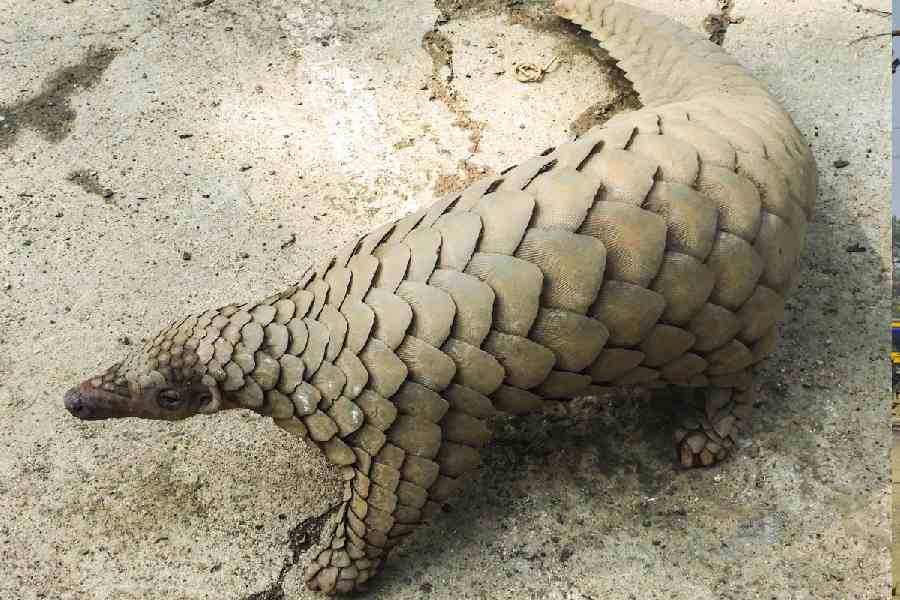Itanagar, March 3 :
Officials have stumbled upon a mysterious cemetery along an unused road built during the Second World War in Arunachal Pradesh.
A preliminary estimate of the state archaeology department
suggests there could be more than 1,500 graves in the cemetery
that lines both sides of the historic General Stilwell Road in Changlang district.
Located in the Hongkap reserve forest between Jairampur and Nampong, the graves are laid in neat rows. Walled-in by bricks, each grave is 1.28 metres wide, 2.20 metres long and about one-and-a-half-feet high with an inch-thick concrete slab on top.
Tage Tada, deputy director (archaeology), who is supervising
excavation at the site, says the Stilwell Road cemetery could be larger than the famous war cemetery in Kohima, Nagaland. The Kohima Cemetery, maintained by the Commonwealth War Graves Commission, attracts visitors from across the country and England. It is famous for the epitaph: ?When you go home, tell them of us and say, for your tomorrow, we gave our today.?
The dead and buried of Stilwell Road, in contrast, were known only to villagers near the site who have lived among the graves ? almost entirely hidden in the shrubbery ? without really giving them much thought. A survey was done last year presumably after an officer of the Assam Rifles took an interest in the cemetery. The state government confirmed the existence of the graves recently.
So far, little is known of the men who were buried. An epitaph over one of the graves reads: ?Major Hsiao Chu-Ching, Company Commander of 2nd Company, 2nd Battalion of 10th Regiment,
Independent Engineers of Chinese Army stationed in India.? He was born in July 1913 at Wei county in Hopeh province, and died in
December 1943. The epitaph is written in Chinese. It was
translated by an army officer, Lt. Col. Upadhya.
Stilwell Road, named after Gen. Joseph Stilwell (?Vinegar Joe?), deputy supreme commander of the Allied Forces, South-East Asian Command (SEAC) during World War II, served as a vital supply link to South Asia when the Japanese invasion forces closed in on
Myanmar from the north through China, and from the south through Thailand. In more recent times, intelligence agencies suspect the
dilapidated road is used by militants travelling from camps to and from Myanmar.
As Japanese pressure from the south increased, it became imperative for the Allies to find an alternative land route from India to supply Chiang Kai-Shek?s Nationalist Kuomintang (KMT) Army, which was fighting the Japanese in China. Stilwell proposed the construction of an all-weather two-lane road from India to China through north Myanmar.
The Ledo-Bhamo-Burma Road that passed through three countries stretched for 1,725 km from Ledo in Assam through Myanmar linking Burma Road, built during World War I, in Myanmar. From here, the engineers were required to widen, straighten and re-metal Burma Road for 614 miles upto Kumming, the capital of Yunnan province in China. Many lives were lost during the construction of Stilwell Road, which had come to be called the ?Man-a-Mile Road?.
The 31-km-stretch of the road that passes through Arunachal from the Jairampur check-gate to the Pangsau pass on the Indo-Myanmar border is being maintained by the state public works department. A short drive beyond Pangsau gives a full view of the ?Lake of No Return? that served as an important landmark for Allied pilots on their return missions. Many aircraft were reported lost in the lake which local people believed was poisonous.
Though the graves that have been unearthed till now are mostly of Chinese, Tada said it is possible that British, American and Indian soldiers were also buried here. He thought it most likely that several graves have been built over Indian dead, who worked as labourers on Stilwell Road. Tada said there was still not enough information on where and how they died.
There is no record of a major battle having being fought here. Malaria and tropical diseases surely claimed many lives. It is equally possible that the dead of battles fought elsewhere lie buried along Stilwell Road.
 Monday, 09 June 2025
Monday, 09 June 2025










